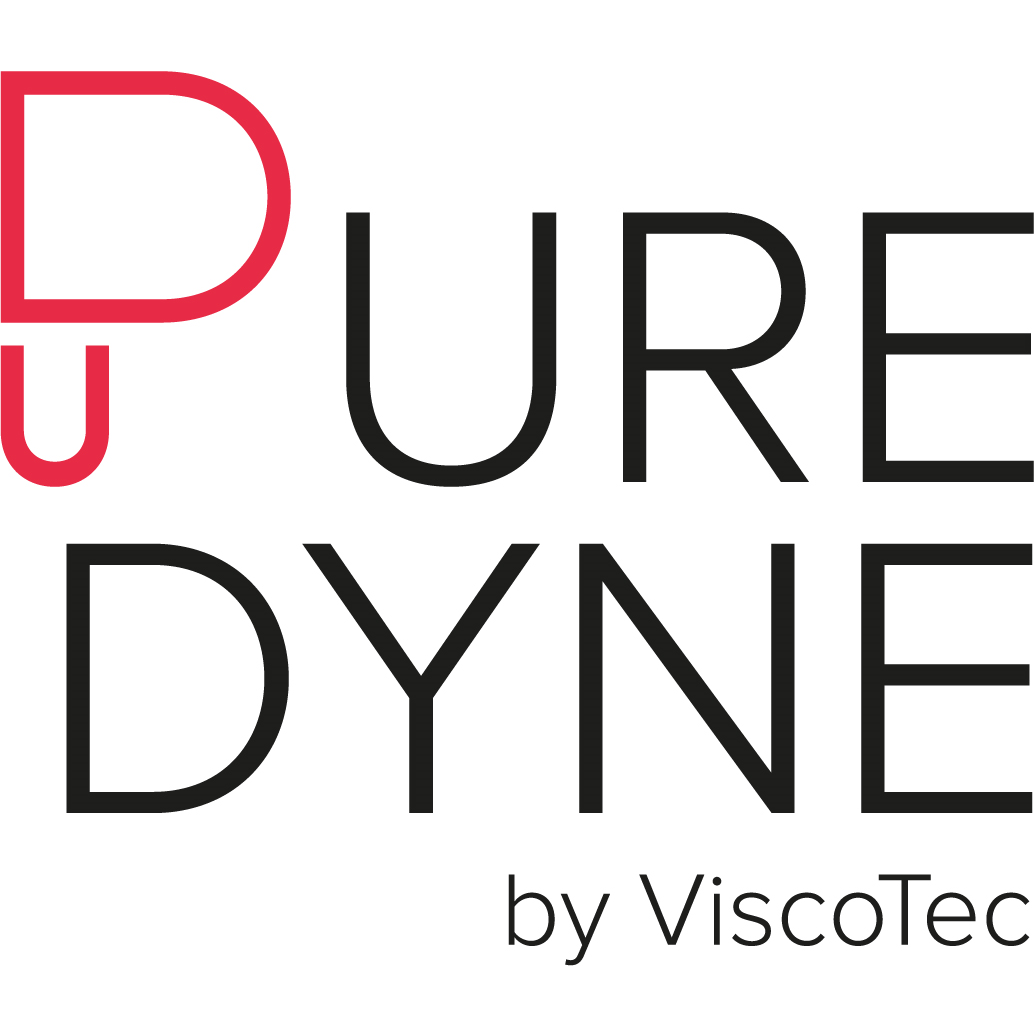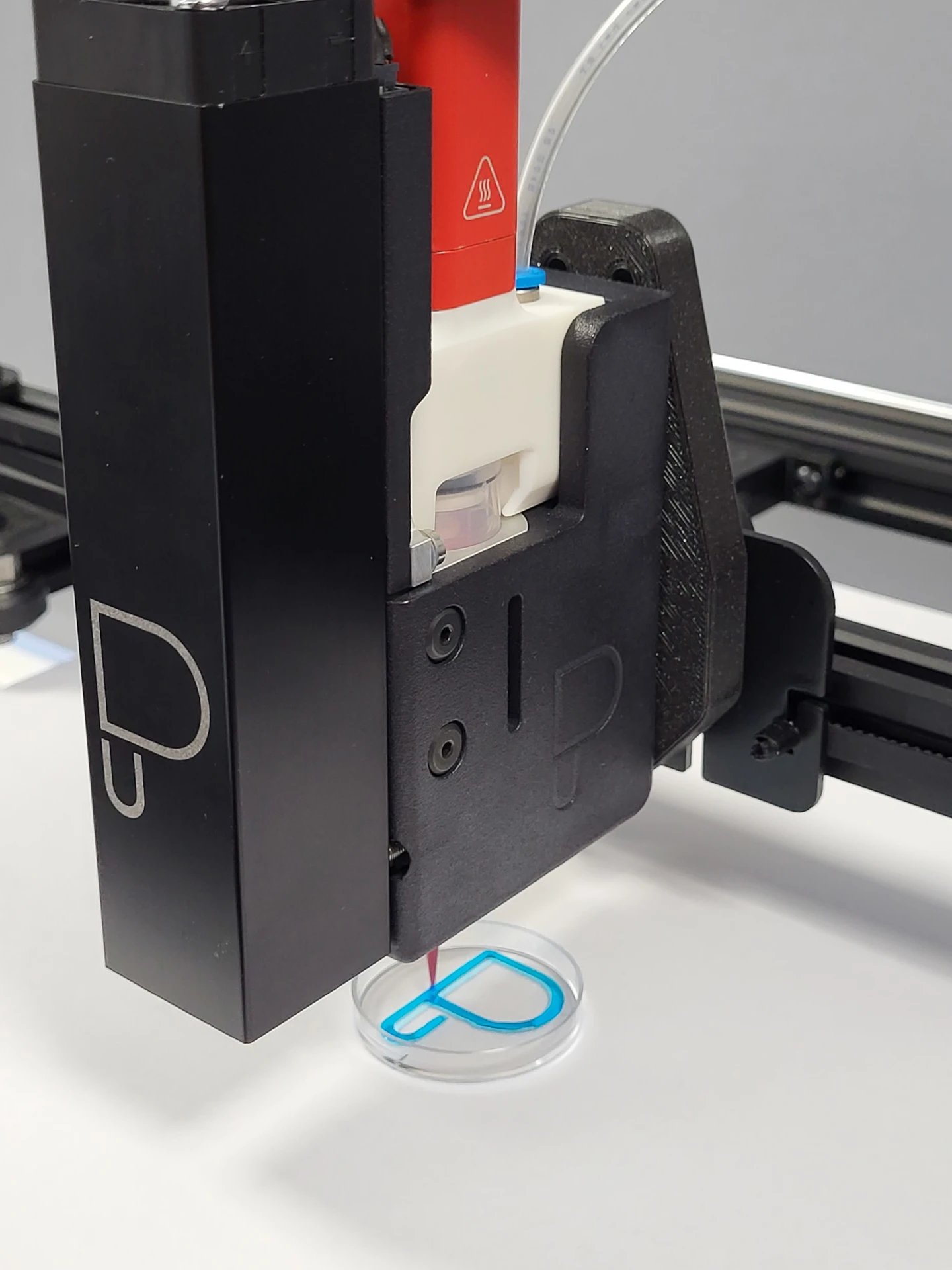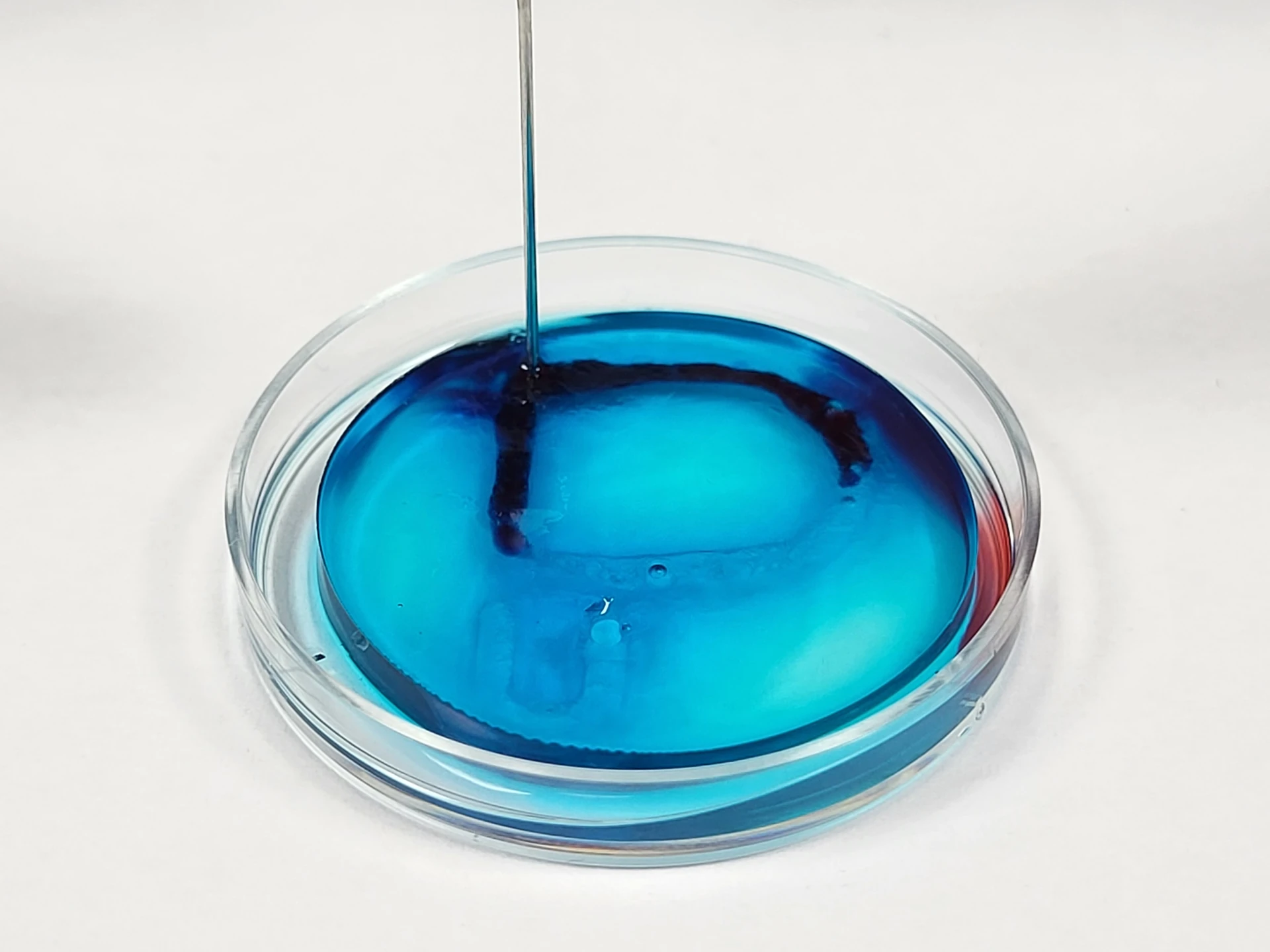Introduction
For the first time, ViscoTec has managed to print open channels and exemplary blood vessel structures with reproducible high quality results. This article outlines the basic principles and test setup. This application report also exemplifies the level of importance these successful tests from co-printing Pluronic and Gelatin have on the industry.
Initial situation
In comparison to additive manufacturing, the printing of hollow cell constructs and blood vessel structures require significantly more complex test setups. With regards to precision, it should be noted that the extrusion-based procedures are typically inferior to the light-based ones. When it comes to material selection, however, the situation is different. In this case, extrusion procedures prove to be more advantageous, also with regard to throughput. Using extrusion-based procedures, hollow structures can either be printed directly, by stacking strands of material – in which case, the stability of the materials used plays a decisive role – or with the aid of sacrificial materials. For this, the planned hollow structure is first printed with sacrificial material and then enclosed in a material matrix that has different physical and chemical properties.
The flow behavior of the biomaterials is a limiting factor that defines the smallest achievable diameter of the hollow body. The test presented here addresses the question of how the technology and processes need to be arranged and aligned to be able to generate hollow structures in Gelatin using the Puredyne kit b with the Puredyne temperature control unit. Pluronic® F-127 (Poloxamer 407) is used as a sacrificial material. It consists of various polymers that exhibit special melting behavior: At room temperature, a Pluronic solution takes on a physical state that is somewhere between gel-like and solid. At lower temperatures (below approx. 20°C), the material liquefies, to the point where it acquires aqueous properties. This behavior can be used to establish structures in a solid state and then liquefy these again.
Test setup and implementation
In preparation for the test, Gelatin with a mass fraction of 7% is brought into a solution with deionized water. In addition, the Gelatin is briefly warmed on a magnetic stirrer and kept at around 40°C until it is used. Pluronic F-127 is then brought into a solution with a mass fraction of 25% using pre-cooled deionized water. Blue food coloring is applied to make it easier to visually determine results. While still in its liquid state, 5 ml are filled into a Puredyne cap b5 and tempered to 20°C for subsequent use with the Puredyne temperature control. After 15 minutes, the printing process begins.
The carrier substrate is a petri dish that is tempered to 40°C with the heat bed of the 3D printer. This ensures that the cool material immediately assumes its gel-like state as soon as it comes into contact with the plate. Using a conical dosing tip (internal diameter 0.4 mm), the desired structure is applied layer by layer in the shape of a “P”. At the opposite corners of the shape, the printing is carried out with a raised cylindrical structure in each case. Afterwards, the pre-heated liquid Gelatin is carefully poured into the petri dish around the printed structure with the aim of ensuring that the Pluronic no longer has any contact with the surface of the Gelatin level. Once this has been poured in, the petri dish is immediately transferred for cooling. Due to the material properties, the Pluronic then liquefies. Printed, liquid Pluronic is drained and carefully extracted. Using a dosing needle, a hole is then made at each corner of the structure. In place of a cell-loaded medium, cooled water with a red dye applied is then purged through the created channel using a syringe, resulting in the remaining Pluronic that served as sacrificial material being purged out.
Results
It has been demonstrated that temperature-sensitive materials can be printed with precision by using the Puredyne kit b printhead in combination with the Puredyne temperature control.
In order to achieve the desired results, precise temperature control is required.
The desired channel structures were able to be printed using a hollow “P” as a basis. The printing process has been verified as reproducible and repeatedly stable and generates reproducible results in the form of precise contours.
Additionally, the series of tests have shown that a larger petri dish and an improved Gelatin composition positively influence the result. It was observed that the Gelatin shrinks when it is cooled, which leads to negative effects with regard to visibility and leak tightness at the edge.
The printed model serves as a substitute for capillary vessels and microfluidic systems. The functionality of the channels can be verified by purging these with red-dyed water. Through additional optimizations, the channel diameter can be reduced further, which would in turn enable the production of more complex structures.


